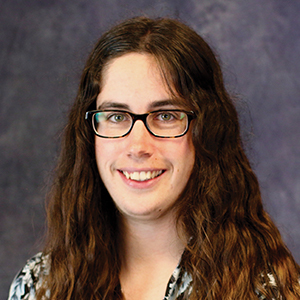Decoding organ communication systems
Like musicians in an orchestra, our organs perform highly specialized jobs yet depend on other organs to perform these jobs properly. To cooperate, organs must communicate using secreted proteins that travel through the blood. Ilia Droujinine is working to decode this communication system to understand how our organs work together to keep us healthy.

Droujinine has always enjoyed reading books about science and nature. While an undergraduate at the University of Waterloo, he completed several semester-long internships in labs around the world, studying neural stem cell migration at the University of Toronto, immune cell development at the Max Planck Institute for Immunobiology in Freiburg, Germany, and cancer biology at Brigham and Women's Hospital in Boston.
Equipped with a new appreciation for the power of experiments to reveal how living organisms work, Droujinine decided to pursue a Ph.D. at Harvard Medical School in Norbert Perrimon's group. His thesis research focused on long-distance communication between organs in the fruit fly Drosophila melanogaster.
The proteins that carry messages between organs are vastly outnumbered by other proteins in the blood such as hemoglobin. This makes them challenging to identify. Droujinine developed new tools to scan through all secreted proteins and find those that travel from one organ to another.
After completing his Ph.D., Droujinine moved to Scripps Research in California in October to start his own lab as a Scripps fellow and principal investigator. His lab will continue his work in the fruit fly and expand the tools he developed in mice to study how interorgan communication could apply to human health.
"I am very fortunate and thankful for this opportunity to develop my research program and grow into independence," Droujinine said.
When not in the lab, Droujinine enjoys reading science fiction and fantasy by such authors as Neil Stephenson and Brandon Sanderson and spending time with his wife and 3-year-old daughter.
Tracking messages between organs
Our organs send messages to each other by secreting proteins that travel through the blood. This communication system allows our organs to work together to support our health: Muscles can request more energy production from fat tissue, or wounded skin can tell the bone marrow to deploy immune cells.
These interorgan communication proteins can be hard to find, because they are surrounded by thousands of other proteins in the blood and carry little information about their origins or destinations.
Ilia Droujinine and his colleagues turned to the fruit fly Drosophila melanogaster, which shares organ systems and secreted proteins with humans, to look for interorgan communicators. They developed a large-scale tracking system to tag proteins in the fat body (similar to the human liver and adipose tissue) and the muscles. Their tracking system found hundreds of proteins made by these organs that traveled to other areas of the fruit fly body.
Many of these proteins have relatives in humans and could reveal new communication networks that help our organs work together. Droujinine and his colleagues plan to continue to investigate the functions of the secreted proteins they identified and to expand their tracking system to mammals.
Enjoy reading ASBMB Today?
Become a member to receive the print edition four times a year and the digital edition monthly.
Learn moreGet the latest from ASBMB Today
Enter your email address, and we’ll send you a weekly email with recent articles, interviews and more.
Latest in People
People highlights or most popular articles

ASBMB names 2026 fellows
The American Society for Biochemistry and Molecular Biology announced that it has named 16 members as 2026 fellows of the society.

ASBMB members receive ASM awards
Jennifer Doudna, Michael Ibba and Kim Orth were recognized by the American Society for Microbiology for their achievements in leadership, education and research.

Mining microbes for rare earth solutions
Joseph Cotruvo, Jr., will receive the ASBMB Mildred Cohn Young Investigator Award at the ASBMB Annual Meeting, March 7–10, just outside of Washington, D.C.

McKnight wins Lasker Award
He was honored at a gala in September and received a $250,000 honorarium.

Building a stronger future for research funding
Hear from Eric Gascho of the Coalition for Health Funding about federal public health investments, the value of collaboration and how scientists can help shape the future of research funding.

Fueling healthier aging, connecting metabolism stress and time
Biochemist Melanie McReynolds investigates how metabolism and stress shape the aging process. Her research on NAD+, a molecule central to cellular energy, reveals how maintaining its balance could promote healthier, longer lives.

